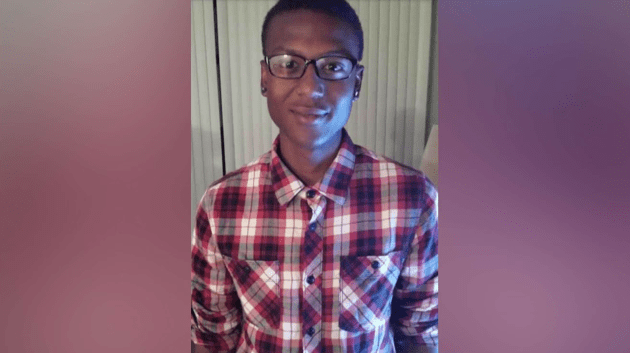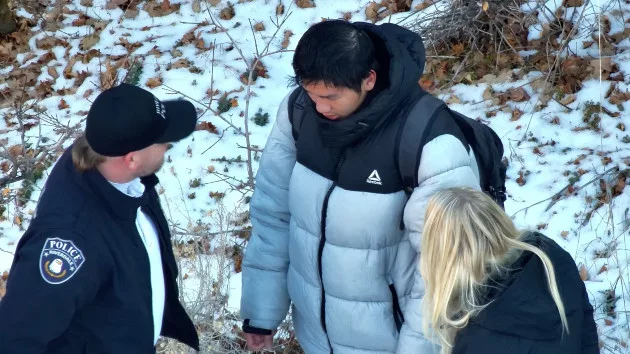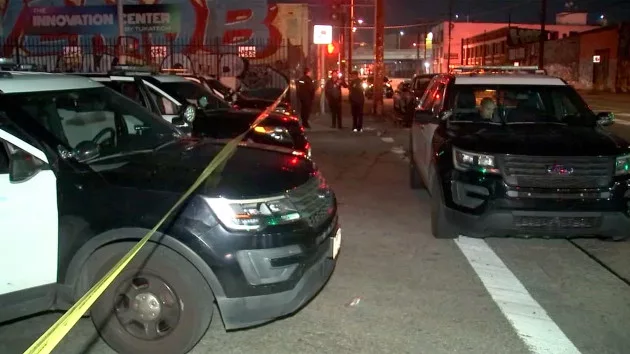
(NEW YORK) — On Saturday, May 25, 1996, Kristin Smart, a freshman at Cal Poly State University, walked home from a party at 2 a.m. and was never seen again. She was 19 years old.
An arrest would not be made for 25 years.
“20/20” takes a fresh look this Friday, June 23 into why the investigation into Smart’s disappearance began slowly, with interviews from investigators and family members. But not all unsolved cases involving college students end in arrest – ABC News features five such cases below.
1996: Kristin Smart
The investigation into Kristin Smart’s disappearance had complications – Smart’s body was never found, false sightings were reported, and the last person to see her alive stopped cooperating with authorities. But the investigation into Smart’s disappearance, as San Luis Obispo Sheriff Ian Parkinson told ABC News, “began very slowly.”
Smart’s roommate, Crystal Calvin, noted Smart hadn’t returned home on May 25, 1996, and alerted campus officials. Calvin told ABC News, Cal Poly felt “very safe” and described how the Cal Poly University Police Department told her they were “sure…she’ll be back” after Memorial Day weekend.
On Tuesday, Smart didn’t show up to class and Calvin told ABC she and her friends tried to report her as missing to the San Luis Obispo Police Department – the local police. They referred her back to the Cal Poly campus police.
Campus police began interviews that day — four days after Smart’s disappearance and outside the critical first 72 hours in a missing person’s case.
As campus police continued their investigation, they spoke several times with Cal Poly freshman Paul Flores, who walked Smart home after the party on May 25. Even though he was the last person to see her alive, Sheriff Parkinson said there was still “a lack of physical evidence,” tying Flores to the case.
A month after Kristin’s disappearance, due to “family’s pressure,” Parkinson said the university police reached out to the San Luis Obispo County Sheriff’s Office to request that they “step in and take over the investigation.”
By then Flores and his roommate had moved out of the dorm and a cleaning crew had come through, Detective Clint Cole, who worked on the case for the San Luis Obispo Sheriff’s Office, told “20/20”.
Though the room was empty, four cadaver dogs separately alerted to the smell of human decomposition on Flores’ mattress, which later was a key piece of circumstantial evidence.
Although Cole said the case “was always active,” it was 27 years before a resolution. In March 2023, Paul Flores was sentenced to 25 years to life in prison for the murder of Kristin Smart.
Despite Flores’ conviction, Smart’s father, Stan Smart, said in a presser that her family “were not happy” because Smart’s remains had never been found. “From that aspect, we don’t have closure,” he said.
Not every missing college student’s story has ended in an arrest. ABC News takes a look back at five unsolved cases below.
1969: Betsy Aardsma
Betsy Aardsma was 22-years-old when she was found under a pile of books in the stacks of Penn State University’s Pattee Library on November 29, 1969.
The first-semester graduate student was transported to the campus hospital and declared dead by a stab wound, according to an article in The Penn Stater.
The deep puncture wound initially produced little blood, leading students and library employees who found her to assume she was suffering a seizure.
According to a 1989 article in the Daily Collegian, Penn State’s student newspaper, several students witnessed a man emerging from the stacks shortly after Aardsma was stabbed.
“Somebody better help that girl,” the man allegedly said to them. But a resulting composite sketch of the man produced no suspects.
As of 2013, according to Onward State, a Penn State student news website, the case remains open.
1986: Jane Marie Prichard
University of Maryland graduate student Jane Prichard was last known to be conducting botany experiments in Blackbird Forest State Park, according to the New Castle County Police Department.
Her body was found partially unclothed by two campers on September 20, 1986 – 20 feet away from her equipment, as reported by The Washington Post at the time.
She was killed by shots from behind, according to The News Journal, and a squirrel hunter came forward to police to report he saw her and another hunter near her before her estimated death.
Investigators arrested the squirrel hunter who came forward with the tip in October 1986 and charged him with Prichard’s murder, The Washington Post reported in August 1987. The only evidence was a single pubic hair at the scene which DNA testing – still in its infancy – found did not belong to the man police arrested.
Charges were dropped in August 1987 and no other suspects have been named.
Anyone with information should contact the Cold Case Homicide Squad at 302-395-2781 or 302-395-8216
1998: Suzanne Jovin
Thirty minutes after she was last seen on Yale University’s campus, senior Suzanne Jovin was found stabbed 17 times in a park almost two miles away.
Investigators from the New Haven Police Department and university department had a 15-person “pool of suspects,” but the name of one suspect, Jovin’s senior thesis adviser, James Van de Velde, leaked to the press.
In an interview with “20/20” in March 2000, Van de Velde maintained his innocence and blamed both Yale and the New Haven Police Department for rushing to presume his guilt.
Investigators never recovered a weapon and there was little physical evidence, but Jovin’s family and friends told “20/20” about frustrations Jovin allegedly had with her adviser before her death.
State attorney Michael Dearington announced that Van de Velde was no longer a suspect in 2013, according to the New Haven Register. He reached a settlement with the city and the university in 2013 over claims that they damaged his career and reputation by circulating his name.
Twenty-five years later, Jovin’s murder remains unsolved.
Anyone with information should contact the Jovin Investigation Team Tip Line at 866-623-8058
2002: Josh Guimond
Josh Guimond was at a party three minutes from his dorm when he went missing on November 9, 2002, in Collegeville, Minnesota. The 19-year-old St. John’s University student left a card game around midnight to use the bathroom, but never returned, ABC News reported at the time.
Investigators from the New Haven Police Department and university police department had developed a 15-person “pool of suspects,” but the name of one suspect, Jovin’s senior thesis adviser, James Van de Velde, leaked to the press.. Guimond’s father has long since suspected foul play.
In 2002, ABC News reported on the similarity between Guimond’s disappearance and that of two other missing college-aged men – Christopher Jenkins and Michael Noll – who all went missing within 10 days and 170 miles of one another. Jenkins’ body was found in a river and the Minneapolis Police reclassified it as a homicide in 2006, according to Minnesota Public Radio News.
Despite dives into lakes on campus, as reported by The Maple Lake Messenger, Guimond’s body has never been found.
Anyone with information should contact the Stearns County Sheriff’s Office at 320-259-3700
2017: David Josiah Lawson
Charmaine Lawson is still pushing for answers since her son, David Josiah Lawson, was stabbed to death at an off-campus party as a sophomore at Humboldt State University in Arcata, California.
Arcata police arrested and charged Kyle Christopher Zoellner, then considered the prime suspect, with murder and a special allegation of using a deadly weapon in 2017.
He pled not guilty and due to insufficient evidence, a judge dismissed the charges. Two years later, a criminal grand jury decided against indicting Zoellner also due to a lack of evidence.
Arcata Police did not immediately respond to comment on if Zoellner is still considered a suspect in the case.
Emerging witness testimony suggested that the homicide was a racially motivated murder, and that the police response may have been tainted by racial bias.
Lawson’s mother still believes Zoellner killed her son and told Golden Gate Express in 2018 that “the traditional system is so backwards…if the shoes were turned, my son would be still sitting in jail.”
Amid rising criticism, the Arcata City Council commissioned a 65-page report reviewing the police response. The report found police bungled basic crime scene security and management, while the city failed to provide appropriate training and planning for investigators.
The Lawson family filed a civil lawsuit against the city of Arcata and reached a settlement in 2021, in which the city admitted no wrongdoing and the Lawsons received $200,000 compensatory damages, according to North Coast Journal.
Zoellner filed his own civil suit alleging wrongful arrest by an Arcata Police detective.
In 2022 a jury sought to award him over $700,000 in damages, but the District Judge ruled against payment as a “reasonable officer” would believe there was a “fair probability” that Zoellner stabbed Lawson an officer could assume Zoellner killed Lawson.
Lawson’s murder remains unsolved six years after his death, but in April, but the District Judge ruled against payment, finding that Zoellner had failed to prove that “no reasonable officer … would have believed there was a fair probability that Mr. Zoellner stabbed Mr. Lawson.”
Anyone with information should contact the Arcata Police tip-line at 707-825-2590
Copyright © 2023, ABC Audio. All rights reserved.





